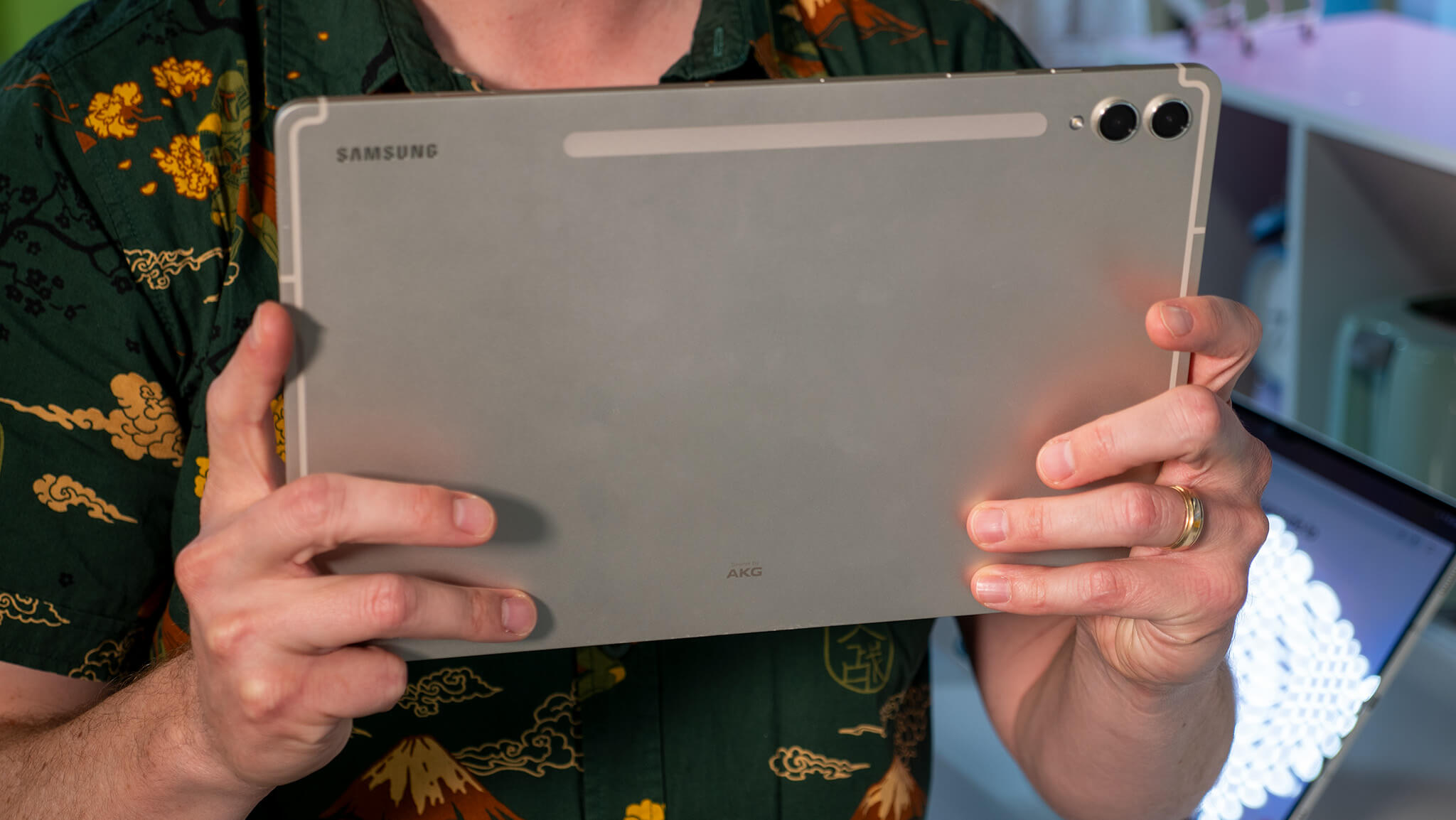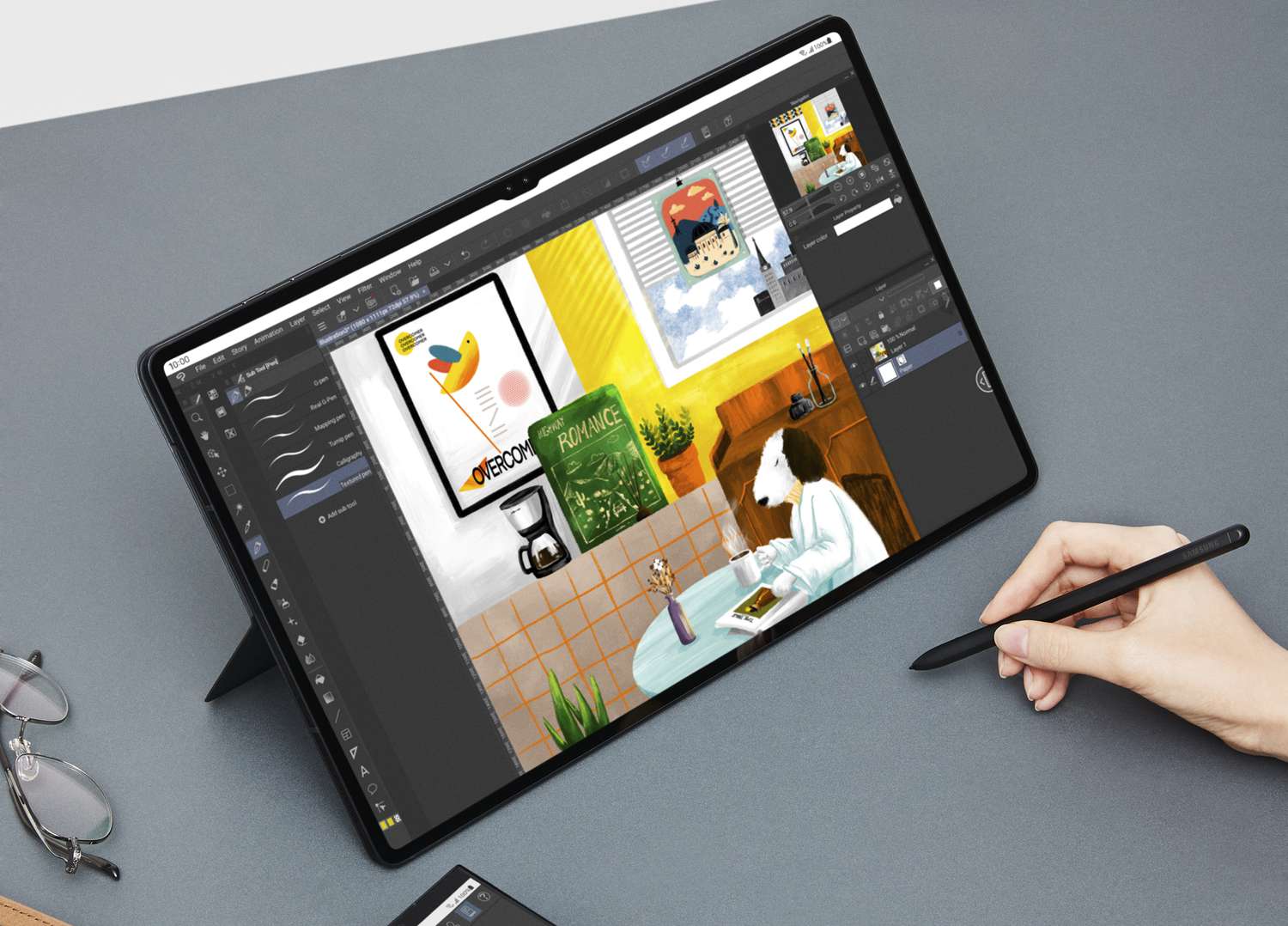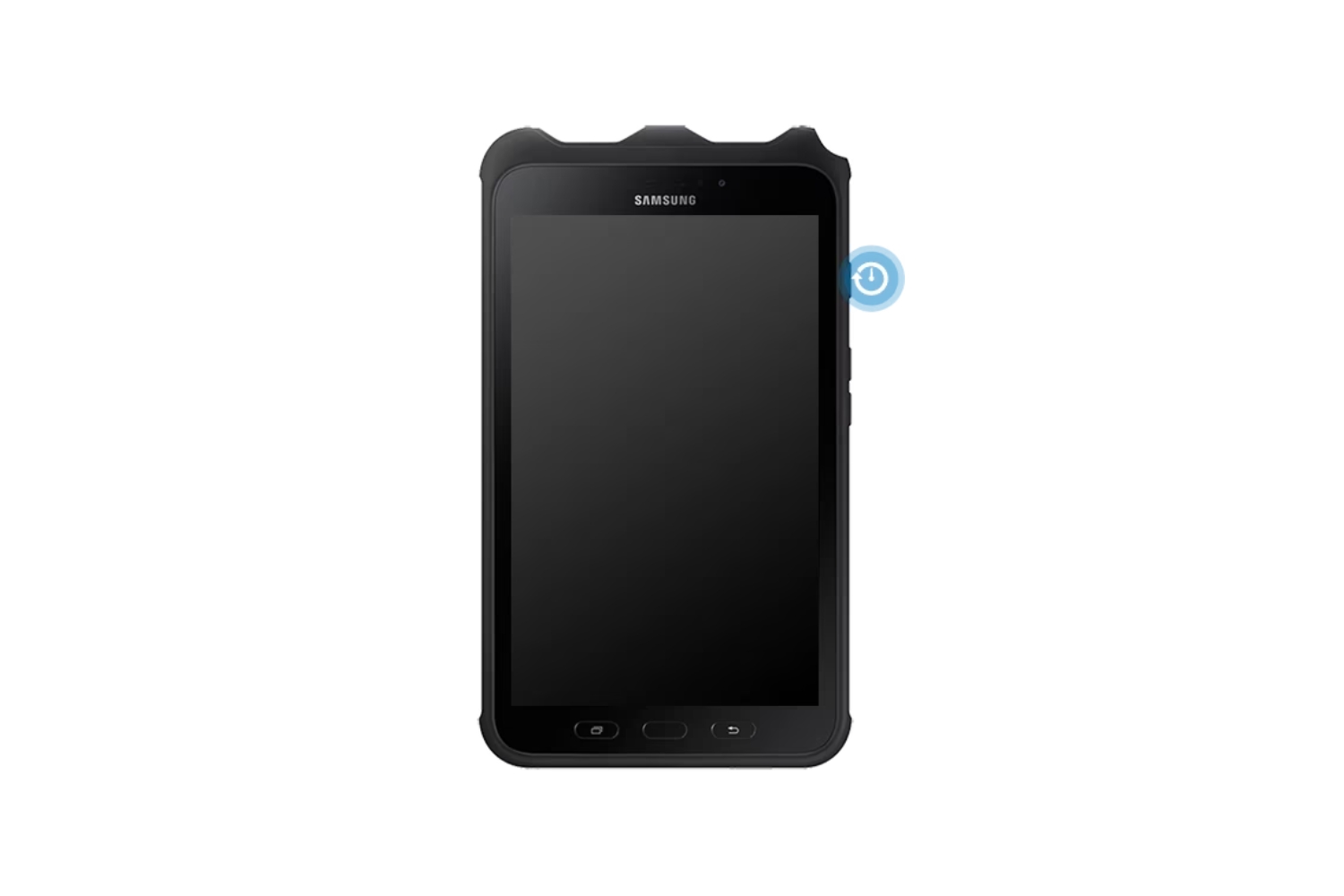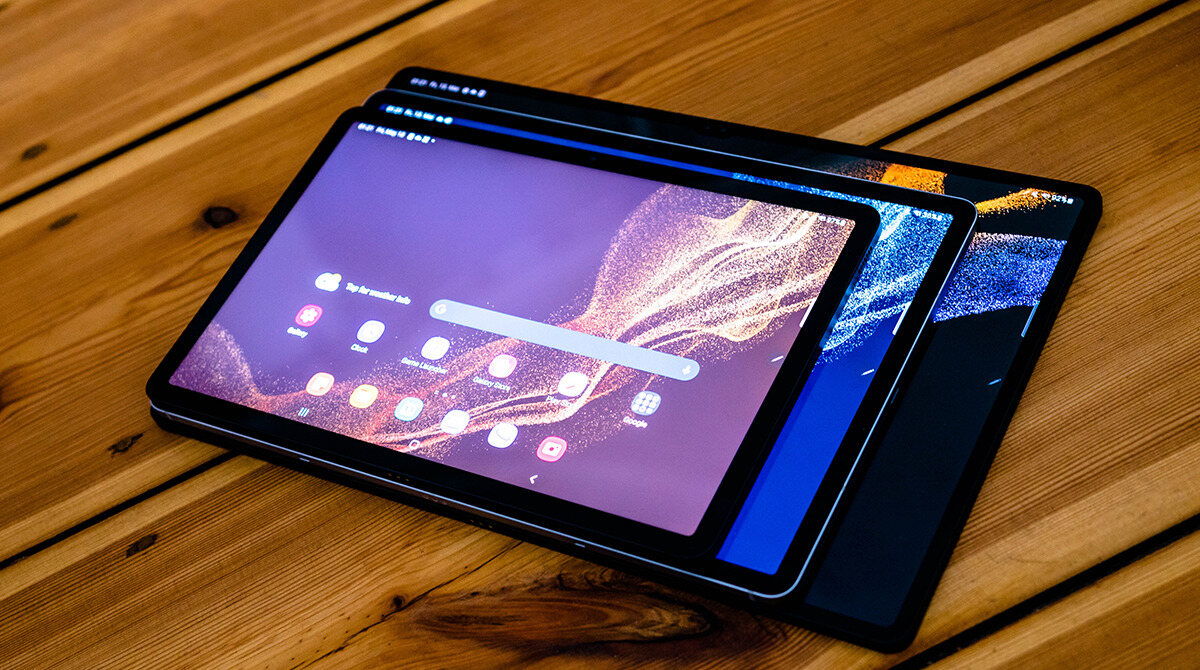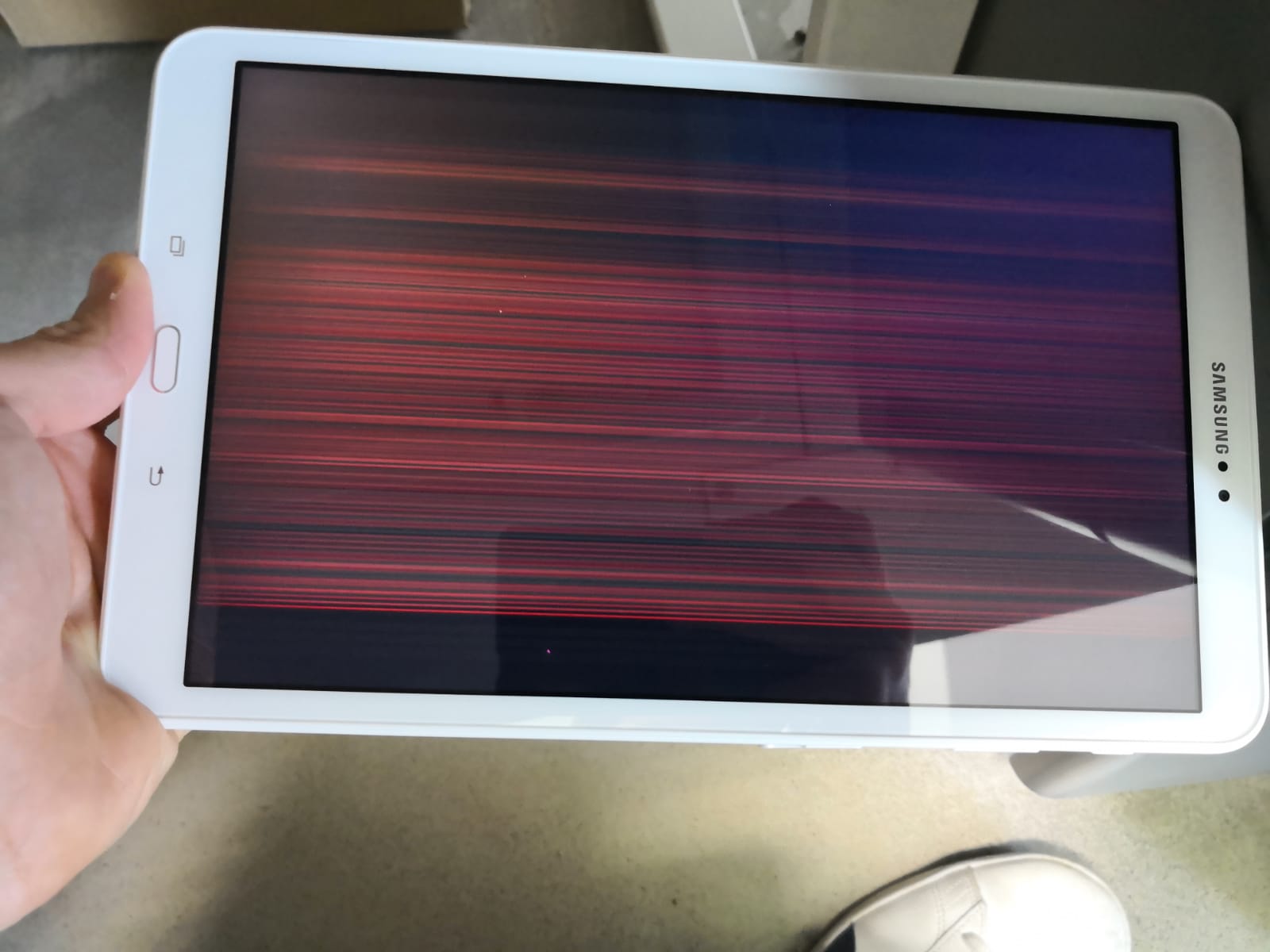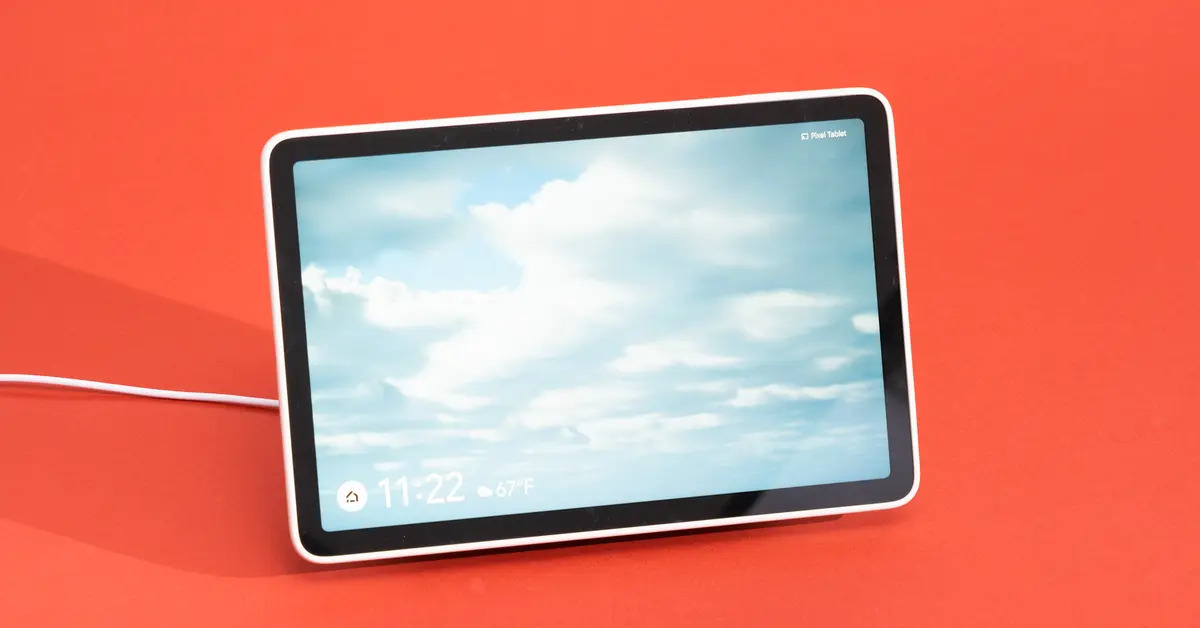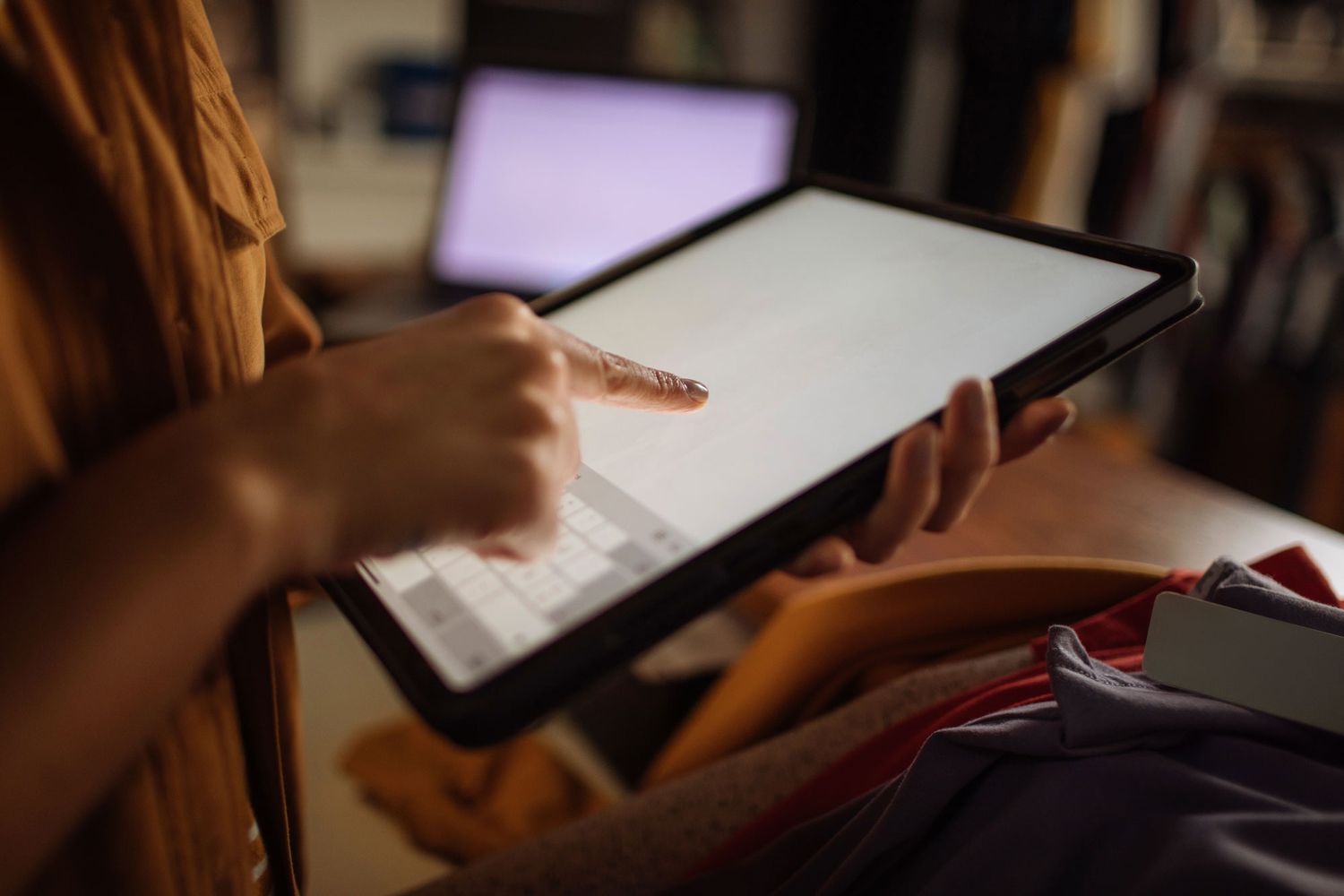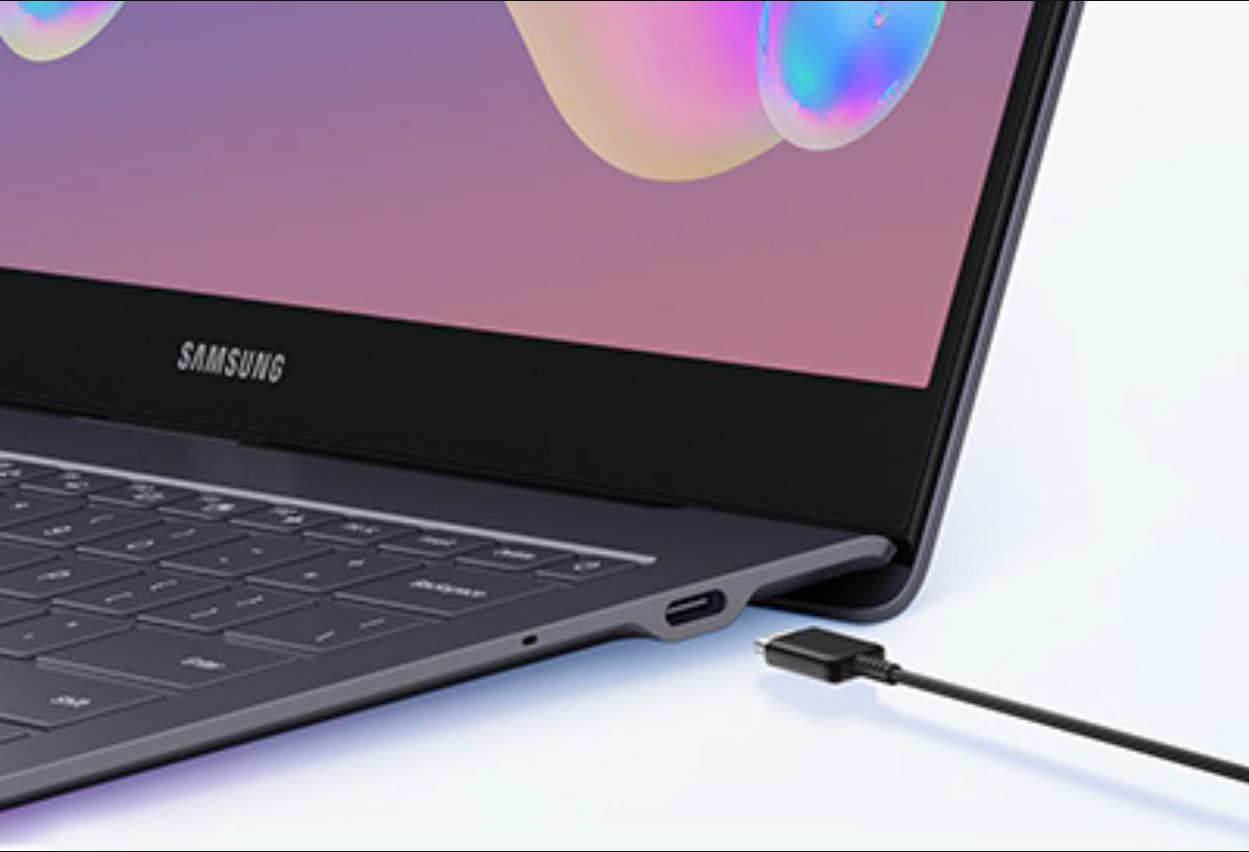Introduction
Overheating is a common issue faced by Samsung tablet users, leading to frustration and potentially damaging the device. Understanding the causes of overheating is crucial for troubleshooting and preventing future occurrences. In this article, we will explore the various factors that can cause a Samsung tablet to overheat and provide insights on how to address the issue.
From battery issues to software updates, external factors to faulty hardware, there are several reasons why a Samsung tablet may experience overheating. It is important to identify the root cause to effectively resolve the problem and prevent further damage.
While overheating can be a common occurrence, it should not be ignored. Persistent overheating can lead to decreased performance, shortened battery life, or even irreversible damage to the tablet. Therefore, it is essential to address the issue promptly once identified.
In the following sections, we will delve into the various reasons why a Samsung tablet may overheat and provide practical solutions to avoid or mitigate the problem. By understanding these causes and implementing the suggested measures, you can ensure the smooth operation and longevity of your Samsung tablet.
Battery Issues
One of the main culprits behind Samsung tablet overheating is battery-related problems. Over time, the battery’s capacity may decrease, leading to inefficient power management and increased heat production. Additionally, using a damaged or incompatible charger can also cause the battery to overheat.
To address battery issues, consider the following steps:
- Calibrate the battery: Occasionally, the tablet’s battery gauge may become inaccurate, leading to improper charging and overheating. To fix this, fully charge your tablet, then allow it to drain completely before recharging it to 100%. Repeat this process a few times to recalibrate the battery gauge.
- Avoid overcharging: Overcharging the tablet’s battery can lead to excessive heat generation. Once the battery reaches 100%, unplug the charger to prevent overcharging and reduce the risk of overheating.
- Use genuine chargers and cables: Cheap or counterfeit chargers and cables may not provide the correct voltage or amperage, which can cause the battery to overheat. Always use genuine Samsung chargers and cables to ensure safe and efficient charging.
- Replace an aging battery: If your tablet’s battery is old and no longer holds a charge for a reasonable amount of time, consider replacing it with a new one. A worn-out battery is more prone to overheating and can affect the overall performance of your device.
By addressing battery issues and taking proactive steps to ensure proper charging and usage, you can significantly reduce the chances of your Samsung tablet overheating due to battery-related problems.
High Processor Usage
The processor is the heart of a Samsung tablet, responsible for performing various tasks and operations. When the processor is under heavy load or constantly running at high speeds, it generates more heat, leading to overheating of the device.
If you notice your tablet getting hot during usage, it may be due to high processor usage. Here are some steps to address this issue:
- Close unnecessary apps: Running multiple apps simultaneously can strain the processor and increase heat production. Close any apps that are not actively being used to reduce the processor’s workload.
- Disable unnecessary background processes: Some apps continue to run in the background, consuming processing power and generating heat. Review your device’s settings and disable any unnecessary background processes to alleviate the strain on the processor.
- Manage heavy resource-intensive apps: Certain apps, such as games or video editing software, require significant processing power and can cause the tablet to overheat. Consider reducing the graphics settings or limiting the usage of such resource-intensive apps to prevent excessive heat generation.
- Perform software updates: Software updates often include optimizations and bug fixes that can improve the overall efficiency of the tablet’s processor. Regularly check for and install the latest software updates to benefit from these enhancements.
By managing the processor’s usage and optimizing the tablet’s performance, you can minimize the chances of overheating due to high processor load. It is important to strike a balance between utilizing the tablet’s capabilities and ensuring that the processor does not become overworked.
Software Updates
Regular software updates are essential for maintaining the optimal functioning of your Samsung tablet. Software updates not only enhance the device’s performance but also address any software-related issues, including those that may cause overheating.
Here’s why software updates are crucial and how they can help prevent overheating:
- Bug fixes and optimizations: Software updates often include bug fixes and optimizations that can improve the efficiency of the tablet’s hardware components, including the processor and battery. These enhancements help minimize overheating by ensuring that the system runs smoothly.
- Security patches: Software updates often include security patches to address any vulnerabilities that have been discovered. Malicious software can strain the tablet’s resources and lead to overheating. By keeping your device updated, you can reduce the risk of malware and potential overheating issues.
- Compatibility improvements: Updated software ensures compatibility with the latest apps and services. Using outdated software can result in compatibility issues, leading to excessive resource usage, which can cause the tablet to overheat. Stay up to date to avoid such compatibility-related overheating problems.
Regularly check for software updates by going to the settings menu on your tablet. If an update is available, follow the instructions to install it. It is recommended to enable automatic updates to ensure that your tablet stays up to date with the latest software releases.
By keeping your tablet’s software updated, you can take advantage of performance improvements, bug fixes, and security patches, ultimately reducing the risk of overheating and optimizing the overall functionality of your Samsung tablet.
External Factors
While software and internal components play a significant role in causing overheating, external factors can also contribute to this problem. Understanding and managing these external factors is crucial for preventing your Samsung tablet from overheating.
Here are some common external factors that can lead to overheating and how to mitigate them:
- Ambient temperature: High ambient temperatures can affect your tablet’s performance and increase the likelihood of overheating. Avoid using your tablet in direct sunlight or in extremely hot environments. Additionally, do not leave your tablet in a closed space, such as a car, where it can be exposed to excessive heat.
- Using a protective case: While protective cases provide much-needed protection for your tablet, they can also trap heat, hindering proper heat dissipation. If you notice your tablet getting hotter than usual, consider removing the case temporarily to allow better airflow and heat dissipation.
- Blocking ventilation ports: Tablets have ventilation ports to dissipate heat generated by internal components. Blocking these ports, either intentionally or unintentionally, can hinder the cooling process and lead to overheating. Ensure that the vents are not obstructed and have sufficient space for airflow.
- Using resource-intensive features: Certain features, such as GPS, Bluetooth, or Wi-Fi, can consume a significant amount of power and generate heat. If you’re not actively using these features, consider disabling them to reduce unnecessary heat production.
- Improper storage: Storing your tablet in a location with high temperatures, such as near a heating vent or in direct sunlight, can cause it to overheat even when not in use. Always store your tablet in a cool and well-ventilated area to prevent heat-related issues.
By being mindful of these external factors and implementing preventive measures, you can significantly reduce the risk of your Samsung tablet overheating. Remember, maintaining a suitable environment and ensuring proper ventilation are essential for the efficient and safe operation of your device.
Faulty Hardware
While Samsung tablets are known for their reliability, there can be instances where faulty hardware components contribute to overheating issues. Hardware malfunctions can disrupt the normal functioning of the device and lead to excessive heat generation.
Here are some possible faulty hardware components that may cause your Samsung tablet to overheat:
- Defective battery: A faulty or damaged battery can lead to irregular power distribution, improper charging, and increased heat production. If you suspect that your tablet’s battery is the culprit, it is advisable to seek professional assistance to diagnose and replace the defective battery.
- Faulty charging port: A damaged or malfunctioning charging port can cause issues with the power supply, leading to inefficient charging and subsequent overheating. In such cases, it may be necessary to repair or replace the charging port.
- Malfunctioning cooling system: Samsung tablets are designed with a cooling system that helps dissipate heat and regulate the device’s temperature. If the cooling system is faulty or obstructed, it can cause inadequate heat dissipation and result in overheating. Consult a professional technician to inspect and repair the cooling system if necessary.
- Loose or damaged components: Loose connections or damaged internal components can disrupt the normal functioning of the tablet, leading to fluctuating power supply and increased heat production. Professional assistance is recommended to identify and resolve any hardware-related issues.
In cases where faulty hardware is suspected, it is best to seek expert assistance. Certified technicians are equipped with the knowledge and tools to diagnose and fix hardware-related problems, ensuring the optimal performance and safety of your Samsung tablet.
Remember, attempting to repair hardware issues yourself may void your device’s warranty and can potentially cause further damage. It is always recommended to consult professionals who specialize in electronics repair.
Malware or Virus
Malware and viruses pose a significant threat to the security and performance of any electronic device, including Samsung tablets. These malicious entities can consume system resources, strain the processor, and lead to overheating.
Here’s how malware or viruses can contribute to your tablet’s overheating and what you can do to mitigate the risks:
- Resource consumption: Malware and viruses often run in the background, consuming valuable system resources to carry out their malicious activities. This extra strain on the processor and memory can cause the tablet to overheat. To combat this, install a reliable and up-to-date antivirus app to scan for and remove any malware or viruses.
- Excessive network activity: Some malware or viruses may initiate excessive network activity, communicating with remote servers or downloading additional malicious files. This continuous network activity can lead to increased power consumption and heat generation. Regularly monitor your tablet’s network usage and be wary of any suspicious or unauthorized activities.
- Phishing attacks: Phishing attacks attempt to trick users into revealing sensitive information or installing malicious software. Falling victim to a phishing attack can result in the download of harmful applications that drain resources and cause overheating. Always exercise caution when clicking on suspicious links or downloading unknown apps.
- Regular software updates and patches: Keeping your tablet’s software updated with the latest security patches is crucial for combating malware and viruses. These updates often include security enhancements that can help prevent malicious activities and reduce the risk of overheating. Enable automatic software updates on your tablet to ensure you are protected against the latest threats.
By taking proactive measures to protect your tablet from malware and viruses, you can prevent excessive resource usage and overheating. Be diligent in maintaining the security of your device by using reputable antivirus software, practicing safe browsing habits, and staying vigilant against potential threats.
If you suspect your tablet is infected with malware or viruses, run a thorough scan with your antivirus software and follow the recommendations for removal. In severe cases, it may be necessary to perform a factory reset or seek professional assistance to restore your tablet’s security and performance.
Overcharging
Overcharging your Samsung tablet is not only a waste of electricity but can also lead to overheating and potential damage to the battery. Continuous charging beyond 100% can cause excessive heat generation and strain the battery’s capacity to hold a charge, ultimately reducing its overall lifespan.
To prevent overcharging and minimize the risk of overheating, consider the following tips:
- Unplug the charger after reaching 100%: Once your tablet’s battery reaches maximum capacity, disconnect the charger promptly. This prevents overcharging and reduces the risk of heat build-up that can lead to overheating.
- Use a power-management app: Some tablets come with built-in power-management features that automatically stop charging when the battery reaches full capacity. Take advantage of these features or consider using third-party power-management apps that provide similar functionality.
- Avoid overnight charging: Leaving your tablet plugged in overnight can result in prolonged exposure to unnecessary charging, increasing the likelihood of overcharging. Charge your tablet during the day when you can monitor its charging progress and unplug it once it reaches 100%.
- Opt for trickle charging: Some devices offer a trickle-charging option that delivers a slow and steady charge to the battery once it reaches full capacity. This helps prevent overcharging by providing a minimal amount of power to compensate for battery self-discharge.
- Invest in a smart charger: Smart chargers are designed to automatically detect when the battery is fully charged and stop the charging process. These chargers provide an added layer of protection against overcharging and overheating.
By being mindful of your charging habits and taking precautions against overcharging, you can significantly reduce the risk of overheating your Samsung tablet. Remember that prolonged exposure to excessive heat can damage the battery and affect your device’s overall performance.
Additionally, it is important to note that using original chargers and cables provided by Samsung or reputable manufacturers is crucial. Cheap and counterfeit chargers can potentially deliver inconsistent voltages or currents, increasing the risk of overheating and damage to your tablet’s battery or other internal components.
Inadequate Ventilation
Proper ventilation is essential to regulate the temperature of your Samsung tablet and prevent overheating. Inadequate ventilation can impede the flow of air and hinder the tablet’s ability to dissipate heat, leading to increased internal temperatures and potential performance issues.
Here’s how you can ensure adequate ventilation for your Samsung tablet:
- Avoid blocking ventilation ports: Samsung tablets are designed with ventilation ports to allow heat to escape. Ensure that these ports are not obstructed by objects such as cases, pillows, or blankets. Blocking these ports can impede airflow and contribute to overheating.
- Use a laptop cooling pad: If you often use your tablet in demanding situations, such as when playing graphics-intensive games or running resource-intensive apps, consider using a laptop cooling pad. These pads provide additional airflow and cooling to the tablet, helping to mitigate the risk of overheating.
- Place your tablet on a hard, flat surface: When using your tablet for an extended period, opt for a hard, flat surface rather than soft or uneven surfaces. Placing your tablet on a hard surface, such as a table or desk, allows better heat dissipation and ensures that the ventilation ports remain unobstructed.
- Clean the ventilation ports: Over time, dust, lint, and debris can accumulate in the ventilation ports, obstructing the airflow and impeding heat dissipation. Regularly clean the ports using compressed air or a soft brush to remove any accumulated debris and maintain proper ventilation.
- Avoid using your tablet while it’s charging: Charging your tablet while using it intensifies the heat production. To minimize the strain and potential overheating, avoid excessive usage or resource-intensive tasks while the tablet is charging.
By ensuring proper ventilation and airflow around your Samsung tablet, you can significantly reduce the risk of overheating and maintain optimal performance. Excessive heat buildup can not only affect the tablet’s performance but also potentially damage its internal components. Taking appropriate measures to enhance ventilation will help extend the lifespan of your device and enhance its overall functionality.
Resource-Intensive Apps
Resource-intensive apps, such as graphic-intensive games, video editing software, or augmented reality applications, can put a significant strain on your Samsung tablet’s hardware, leading to increased heat generation and potential overheating.
To prevent overheating caused by resource-intensive apps, consider the following steps:
- Monitor app usage: Keep an eye on the resource usage of different apps on your tablet. Use the built-in device manager or third-party apps to identify apps that consume excessive CPU power or memory. Uninstall or disable resource-intensive apps that are not essential or limit their usage to avoid excessive heat generation.
- Adjust graphics settings: Many resource-intensive apps allow you to adjust graphics settings to reduce the strain on your tablet’s hardware. Lowering the graphical quality or disabling certain effects can help alleviate the burden on the processor and prevent overheating.
- Close unused apps: Ensure that resource-intensive apps are the only ones running when you require their usage. Closing unused apps not only frees up system resources but also reduces the overall load on your tablet, minimizing the risk of overheating.
- Manage background processes: Some apps continue to run in the background, consuming processing power and generating heat even when they are not actively being used. Review your device’s settings and selectively disable unnecessary background processes to reduce the strain on the processor.
- Limit multitasking: Running multiple resource-intensive apps simultaneously can overwhelm your tablet’s hardware, causing excessive heat production. Avoid multitasking with such apps or limit the number of resource-intensive tasks you perform at once to prevent overheating.
By managing resource-intensive apps and optimizing their usage, you can minimize the strain on your Samsung tablet’s hardware and reduce the chances of overheating. It is important to strike a balance between utilizing the capabilities of your tablet and ensuring that it can handle the resource demands without overheating.
Common Misconceptions about Overheating
When it comes to overheating issues with Samsung tablets, there are several misconceptions that can cause confusion and misinterpretation of the problem. It’s important to address these misconceptions and provide clarity regarding tablet overheating:
- Using your tablet while charging causes overheating: While it’s true that charging your tablet can generate heat, using it while it’s charging is unlikely to cause overheating. Modern Samsung tablets are designed to handle simultaneous charging and usage without significant overheating issues.
- Overheating only occurs during heavy usage: While resource-intensive tasks can certainly increase the likelihood of overheating, it’s important to note that even during normal usage, a Samsung tablet can experience overheating if there are underlying issues like battery problems or inadequate ventilation. Overheating can occur during everyday tasks like browsing the internet or watching videos.
- Keeping your tablet in the refrigerator can cool it down: Placing your tablet in a refrigerator or freezer to cool it down may seem like a quick fix, but it’s not recommended. Extreme temperature changes can cause condensation, leading to potential internal damage to your tablet. It’s best to follow proper ventilation practices and allow your tablet to cool down naturally.
- Overheating is always a sign of a faulty device: While overheating can be a symptom of hardware issues, it’s not always the case. Factors like ambient temperature, resource-intensive apps, or charging habits can also contribute to overheating. Regular maintenance and monitoring can significantly reduce the risk of overheating, even with a properly functioning tablet.
- Thermal throttling is an indication of overheating: Thermal throttling is a mechanism that tablets employ to prevent overheating by reducing the processor’s speed when it reaches high temperatures. Although thermal throttling can occur during elevated thermal conditions, it is not necessarily a sign of overheating. Tablets are designed to employ such measures to protect the device from damage.
By debunking these common misconceptions, we can gain a clearer understanding of the true causes and potential solutions for Samsung tablet overheating. It’s crucial to base troubleshooting efforts on accurate information and take appropriate measures to address the underlying issues contributing to the problem.
Conclusion
In conclusion, understanding the causes of overheating is essential for troubleshooting and preventing Samsung tablet-related issues. By addressing battery problems, managing high processor usage, keeping software up to date, considering external factors, ensuring proper ventilation, and being mindful of resource-intensive apps, you can minimize the risk of overheating and maintain the optimal performance of your tablet.
Battery issues, such as calibrating the battery and avoiding overcharging, are crucial aspects to consider. High processor usage can be managed by closing unnecessary apps, disabling background processes, and utilizing software updates. Speaking of which, performing regular software updates is crucial for bug fixes, optimizations, and security patches that help prevent overheating.
External factors, such as ambient temperature, protective cases, and blocking ventilation ports, should also be taken into account to ensure proper ventilation and heat dissipation. Additionally, being aware of the risks associated with faulty hardware and malware/virus infections is essential for prompt resolution and prevention of overheating issues.
Lastly, misconceptions surrounding overheating must be addressed to provide accurate information. It’s important to dispel common myths and clarify the factors that truly contribute to overheating, such as charging habits, usage patterns, and environmental conditions.
By implementing the suggestions outlined in this article and maintaining proper care for your Samsung tablet, you can mitigate the risk of overheating and ensure a smoother, more enjoyable user experience. Remember that prevention and timely resolution of overheating issues are key to preserving the longevity and performance of your device.







